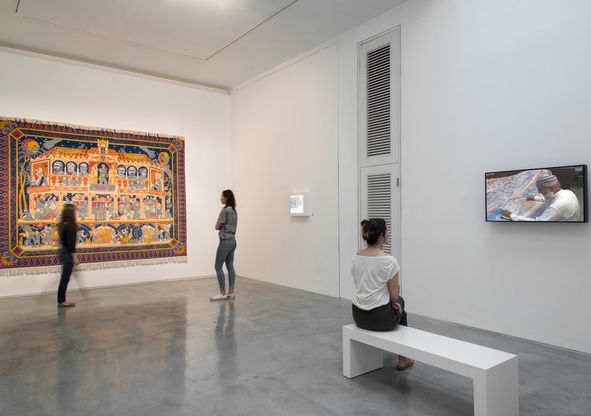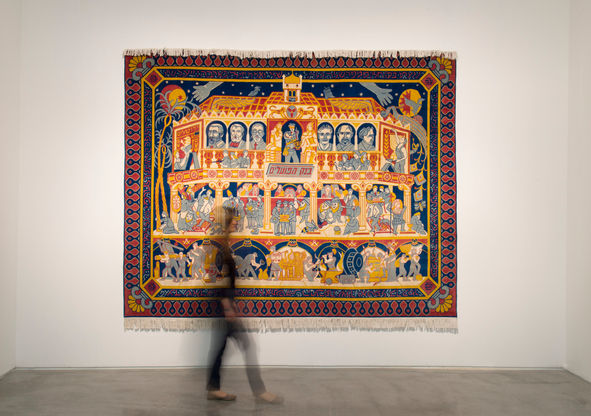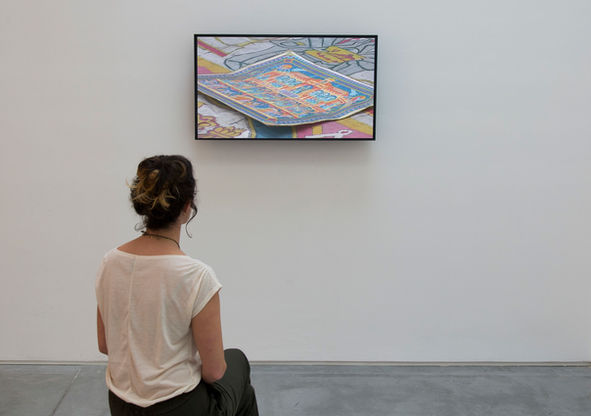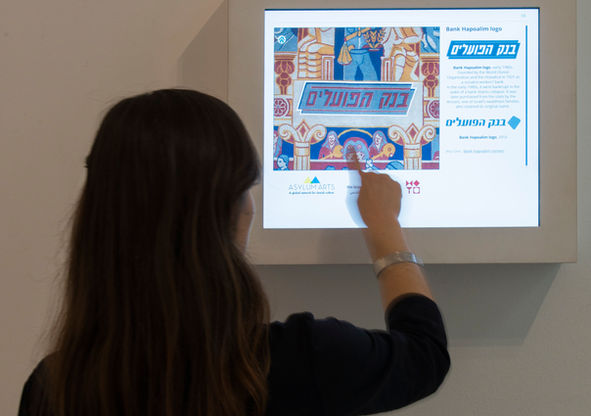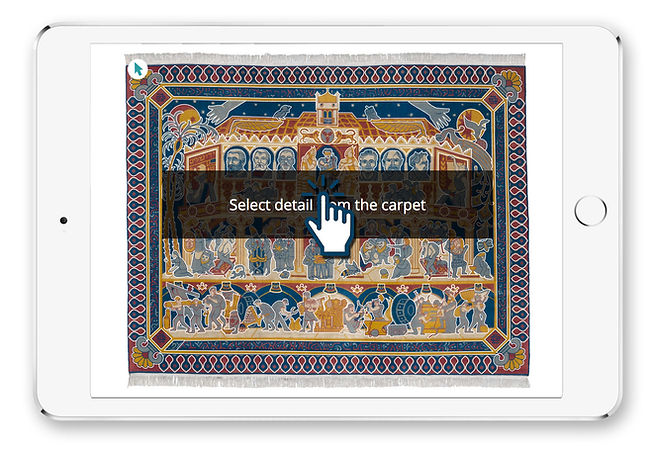Bank Hapoalim Carpet
Bank Hapoalim, which literally means "The Worker's Bank" in Hebrew, is one of Israel's largest banks. The carpet was hand-woven in Afghanistan over the course of a year, then had to be smuggled into Israel, due to the lack of diplomatic relations between the two countries.
Bank Hapoalim Carpet, installation view, The Israel Museum, Jerusalem, 2015. The large-scale carpet, mounted on a wall, is accompanied by an interactive app and a documentary video.
Aesthetically, Bank Hapoalim Carpet resembles Bezalel rugs from the beginning of the 20th century. The Bezalel School started as the Zionist variation of the Arts and crafts movement. Bezalel's works are considered to be the first chapter of Israeli art, the first attempt to create a visual identity for the new nation. A closer look at Michaeli's carpet reveals many disturbing details such as a variety of burglars and thieves, that subvert the first impression of a unified identity.

Bank Hapoalim Carpet, Hand-woven wool and silk wall carpet, 8.25 x 10.5', 2015
Bank Hapoalim was founded by the Socialist movement and was identified with the working class in Israel until it was privatized in the late '90s. Even though its days as a Socialist symbol have long since passed, the bank still keeps its name "The Workers' Bank." The carpet depicts an architectural structure as an allegory of a social structure: At the bottom are those who are getting things done, the workers. Above them is the middle class, and on the highest level we find the decision-makers, their faces are a melding of Zionist leaders and figures from world history.






Details from Bank Hapoalim Carpet
The image has an encyclopedic quality with approximately 100 'entries', each has a specific allusion; archeological objects, Zionist propaganda, Socialist posters, Renaissance art, symbols of Israeli sovereignty (bills, coins, stamps, etc.), Israeli art, and much more.

















The Making of Bank Hapoalim Carpet, Video, 6:50 Minutes, Israel and Afghanistan, 2014
The Making of Bank Hapoalim Carpet documents the different stages of executing Bank Hapoalim Carpet: from the initial painting made by Ido Michaeli, through the long weaving process in Afghanistan, to the hanging of the finished carpet at the Israel Museum in Jerusalem. The video opens a window to the craft of carpet-making and presents the surprising, somewhat absurd, encounter between the Afghan workers and the multitude of Zionist symbols hidden in the carpet's painting.

Herzl Rug, Hand-woven wool and silk, 12 × 12.5", 2014
Herzl Rug is a handmade rug, woven in the same factory as the Bank Hapoalim Carpet and features one of its details—a portrait of Theodor Herzl, the Zionist pioneer and visionary of the Jewish state. His figure has previously appeared on many rugs made in Bezalel—Israel's national art school that was founded in 1906, based on the Arts and Crafts movement.
